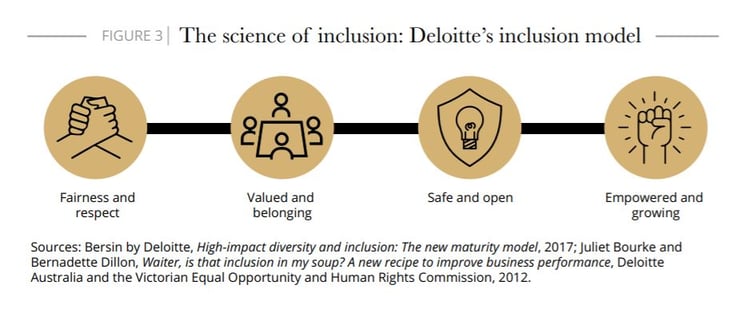Attraction / Diversity and Inclusion – what, why and who’s doing it well?

William Geldart
January 8, 2020
Diversity and Inclusion is a key agenda item on the board of businesses. If I had to guess, I’d say it features on just about every single list of predictions of things set to impact and disrupt HR in the short, medium and long term.
Diversity and Inclusion presents challenges and opportunities, regardless of the size of your business or the industry in which you operate. The bottom line is that if it isn’t already, Diversity and Inclusion should be a key business initiative and should help drive your wider talent agenda.
Let’s start with some definitions
The terms Diversity and Inclusion are often seen as industry buzzwords and tend to be used interchangeably. The reality is that the terms have very different meanings.
Put simply, diversity is the representation of traits and experiences in a company’s workforce. In recent years, there’s been an evolution of the more traditional definitions of diversity and the characteristics encompassed such as age, gender, disability, race. Businesses are now recognising ‘diversity of thought and perspective’ and its value. There’s also been a shift towards businesses looking for talent from other industries and recognising that the transferrable skills alongside different views and perspectives will add widespread value.
Inclusion is far trickier to define. Loosely, it is the creation of an environment that promotes collaboration, support and respect. Inclusion allows employees to flourish regardless of their characteristic, traits and experiences. The challenge with inclusion is that often, it’s left to personal interpretation. If you’re struggling with the concept of inclusion, this infographic from Deloitte breaks it down nicely. Through their research into a holistic definition, findings conclude that there are four main components to get right.
Definitions aside, a key takeaway is that Diversity and Inclusion are a double act and it’s short sighted not to recognise that. They’re separate concepts but they should be considered equally important.
What’s in it for me?
Few would argue against business being more diverse and inclusive. Research proves that it’s good for your business’ bottom line. More diverse and inclusive businesses perform better financially, they are more innovative and more productive. A 2018 study by Harvard Business Review found that businesses with above average diversity had 19% higher innovation revenues, being able to conceptualise and bring to market a far superior range of products to their consumers. Improving Diversity and Inclusion makes perfect business sense. But improved output or financial reward isn’t where it ends.
Diversity and Inclusion shouldn’t be considered in isolation or as a short-term piece of work. The reality is that yes, phase one of your diversity strategy will likely focus on how you can get ‘diverse’ talent through the door. But it’s not as easy as setting quotas and targets, actively pursuing female talent or making job descriptions gender neutral. That’s not where it ends. There’s a bigger and arguably more important piece of work to be done. Diversity and Inclusion offers the opportunity for businesses to reflect on, to iterate and to enhance their EVP, their values and essentially, change things for the better.
So, who’s leading the way?
There are a number of businesses leading the way with Diversity and Inclusion. Glassdoor consider companies such as Visa, Nestle, Bristol-Myers Squibb, Siemens and Microsoft as Diversity and Inclusion trailblazers.
If you want something to really aspire to, take a look at the work Microsoft are doing. Diversity and Inclusion is right at the top of their board room agenda. It’s a clear initiative across the business and has been for the last 20 years. There’s a hefty investment into research, programs, partner agencies and everything in between. Microsoft’s annual report on their progress offers full visibility into their commitment to creating a more diverse and inclusive workplace and how they’re performing against their own objectives as a business. It makes for interesting reading.
What to consider
There are a number of questions which immediately spring to mind and I’m not suggesting that I have all of the answers. But when you think about Diversity and Inclusion, ask yourself these questions:
- How do you become more attractive to diverse talent?
- How do you create an environment in which diverse talent can flourish?
- How you ensure that diverse talent stays within your business and isn’t lured by the competition?
If you’d like to continue the conversation on Diversity and Inclusion, you can get in touch with me at william.geldart@bps-world.com or on LinkedIn.



